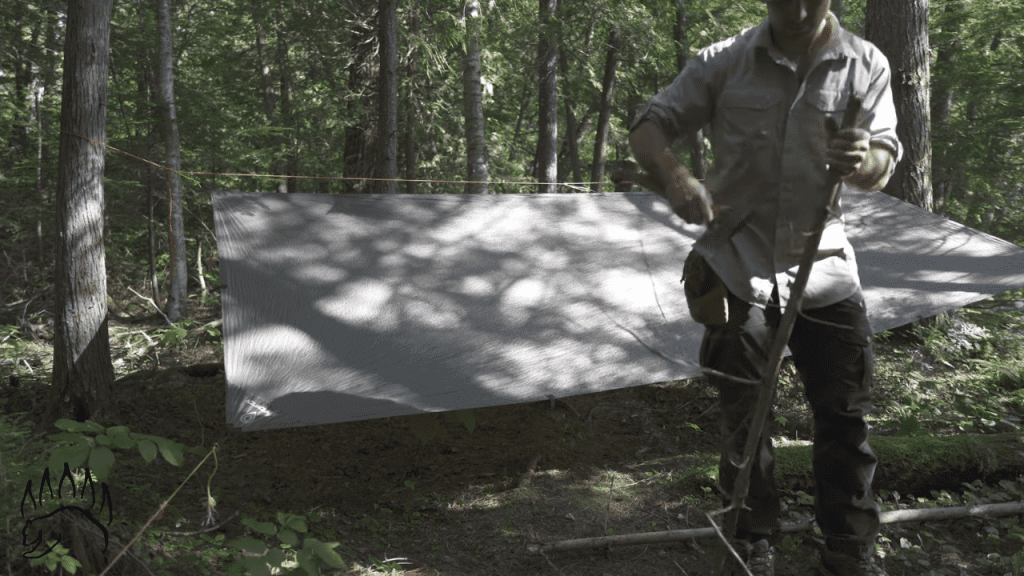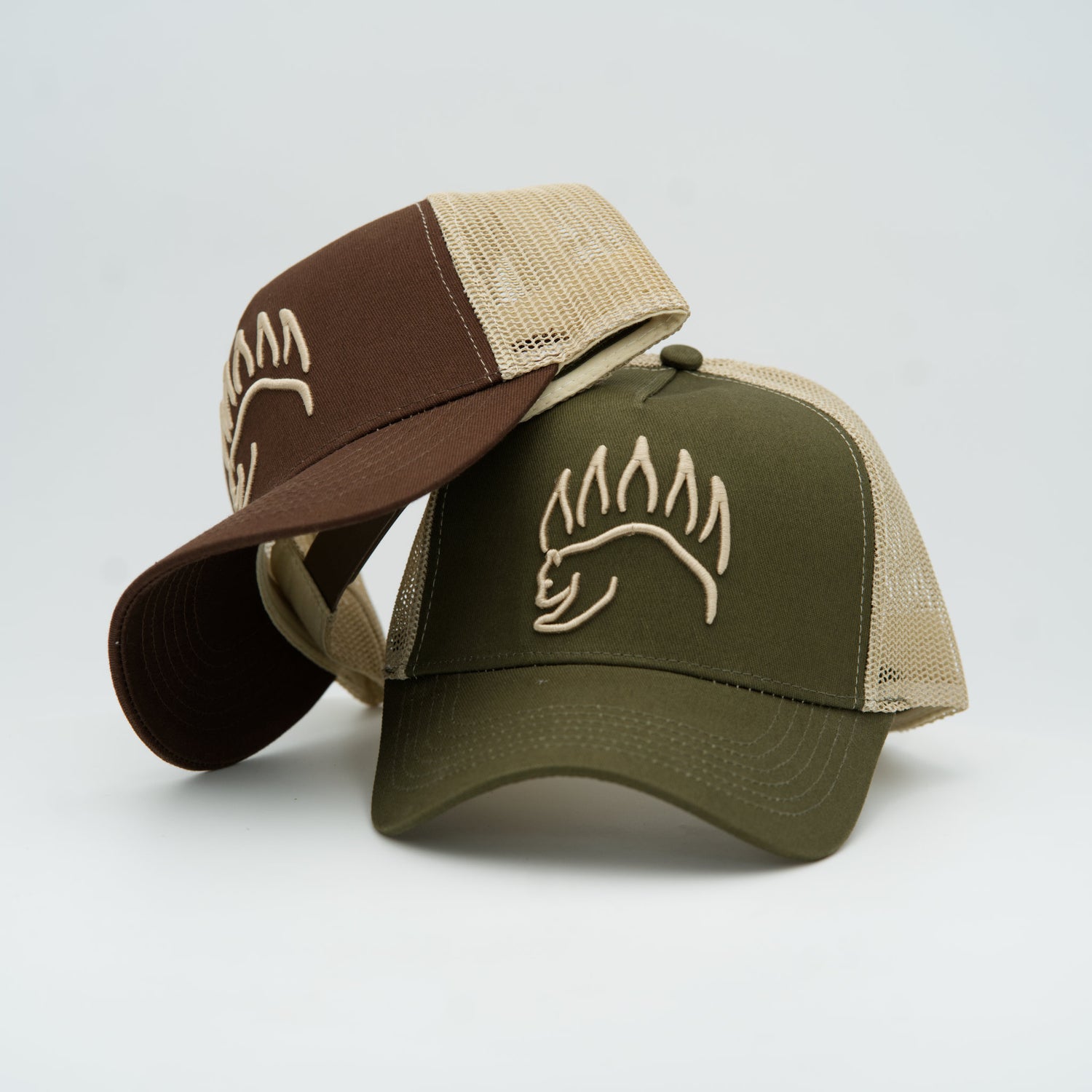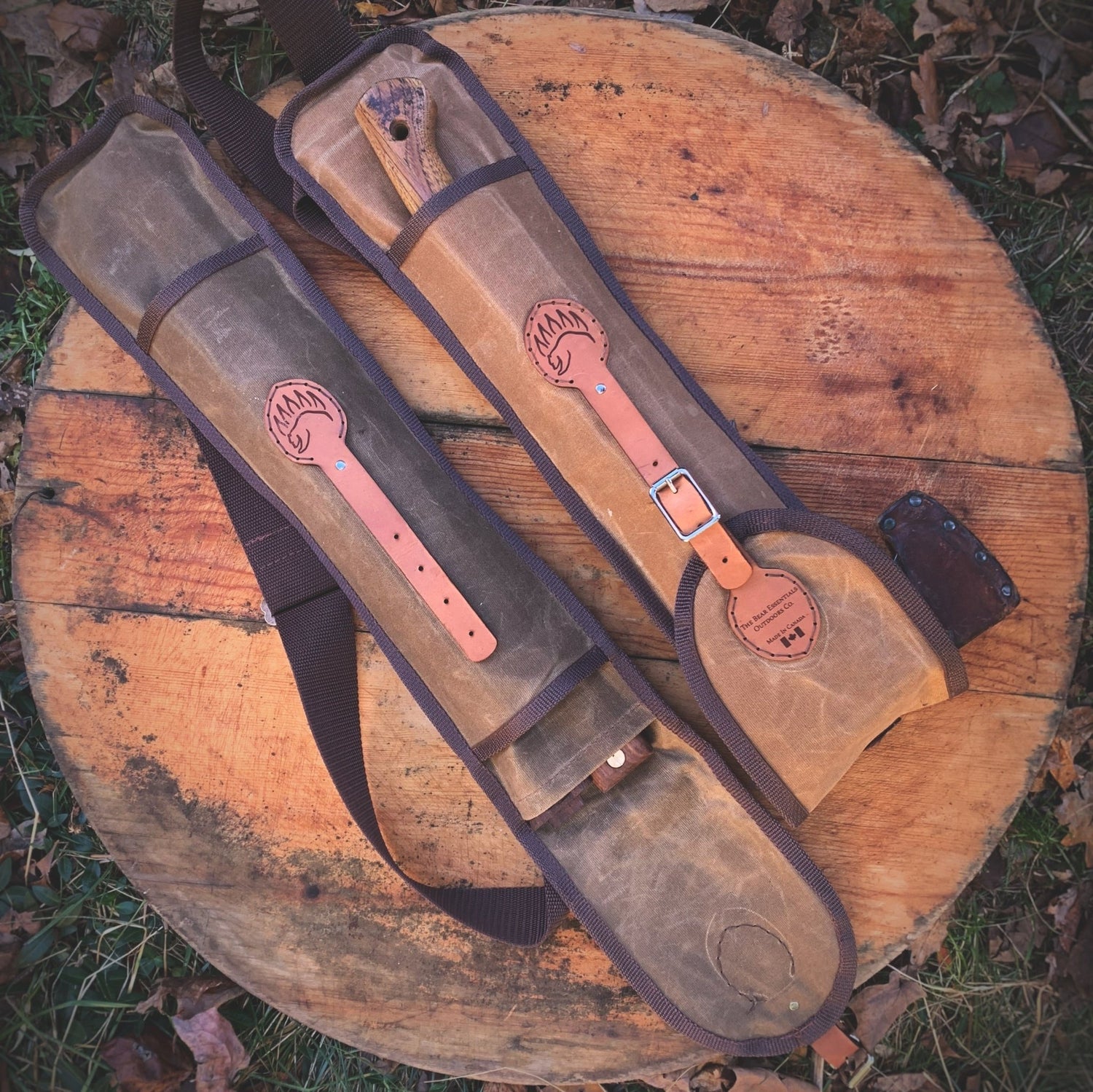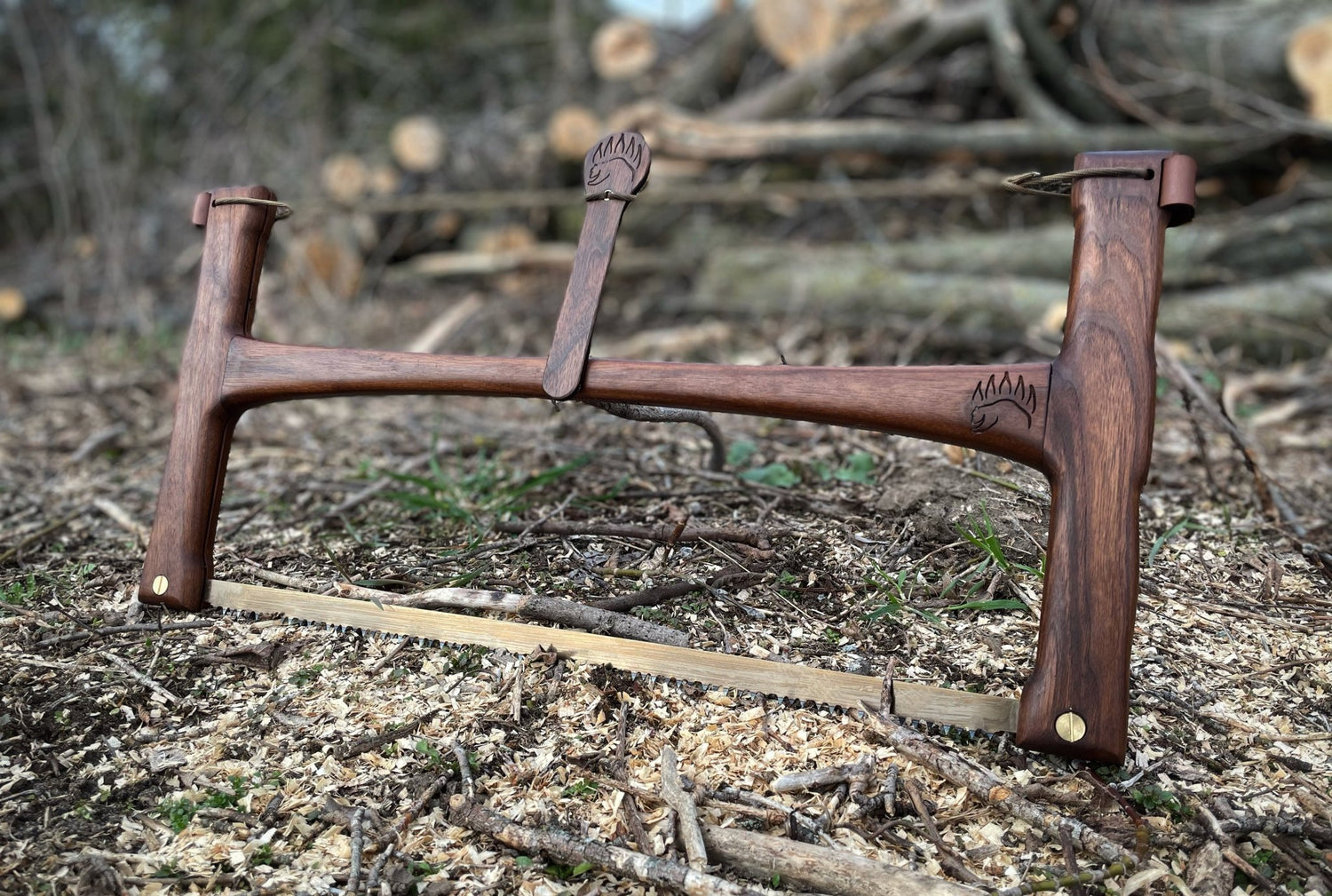Learn essential camping tarp setup techniques for beginners! Discover how to efficiently shelter yourself outdoors with easy-to-follow tips and tricks.

It's one thing to set up a camping tarp. But it's another to set it up properly. When it comes to tarps, you want something that will provide adequate protection from the elements. You also don't want it to sag, and you want something you can adjust easily.

The camping tarp I'm going to show you ticks all the boxes. Today you're going to learn how to set up a tarp correctly, and we'll discuss a couple of configurations you can use. But first, I'm going to demonstrate two friction hitches (Taut-Line Hitch and Prusik Knot) and one connecting knot (Reef/Square Knot).

Both the Taut-Line Hitch and the Prusik Knot are friction hitches. Friction hitches are fantastic for this application because when you pull against them, the friction makes them stop and tighten.
They're like a knot, but when you slide them, they can slide around a line and adjust them easily. Finally, I'm going to break down the process in a way that's hopefully easier to understand.
How to Set Up a Camping Tarp
I recommend tying the corners of your tarp with your cord at home before you roll it up. Add some Prusik knots along the middle of the tarp and thread your ridgeline through the knots. Check out The Bear Essentials tutorial below to tie the Prusik knot.

Attach your Prusik knot to your tarp strap in preparation for tying the ridgeline.
To tie a reef knot, simply follow these steps:
Step 1:
Slide the line through the tarp strap.
Step 2:
Hold both ends in your hands. Now, cross the line you're holding in your right hand over the line in your left hand.
Step 3:
Go underneath and through the loop that has formed.
Step 4:
Now again take the right hand end, and this time go UNDER the line in your left hand (or behind it - if that makes more sense)
Step 5:
Pull tight so the knot lies flat.
Now, let's set up our tarp.

Step 1:
Unfurl your tarp and unravel its lines. If you want to make the setup easier for you, simply color-code your lines.

Step 2:
Find your ridge line and wrap the first end around a tree. To secure it to the tree, you need to tie the end into a taut-line hitch. Check out the video below for the taut-line hitch tutorial.
You can also read the written tutorial for the taut-line hitch here.
The beauty of the taut-line hitch is that it is adjustable. See how the taut-line knot initially locks in place?


Step 3:
Follow the ridge line to the other end of the tarp. Create another taut-line hitch around a tree and tighten it.

Step 4:
Pull the edges of the tarp to make it taut.
Use the Prusik knots you made to make sure your tarp is taut. Simply slide the two side Prusik knots to the edge to make sure it's tight. The Prusik knot in the middle can act as an anchor to your tarp.
Attaching the Tarp to the Stakes
Step 1:
Drive your stakes to the ground and tie a taut-line hitch around the first one. Repeat the process on all stakes to complete your tarp set up.

Follow the ridge line to the other end of the tarp. Create another taut-line hitch around a tree and tighten it.
Step 2:
Want to lift the sides of your tarp to let some air in?

Simply grab some long sticks to use as poles.

Remove any branches sticking out at the sides with your ax or bucksaw.
Loosen the taut-line hitch and place the stick under a corner of the tarp to hoist it. Don't forget to tighten the taut-line hitch afterward!
Step 3:
Rain in the forecast? Just remove your pole, slide the taut-line hitch up, and tighten it again.
Attaching the Tarp to the Stakes


To adjust the tarp, simply hold one of your Prusik knots and slide it all the way to the edge. You can now have it in any configuration that you want.
Check out The Bear Essentials Outdoors Co. blog for more camping tutorials and follow me on my Youtube Channel.





